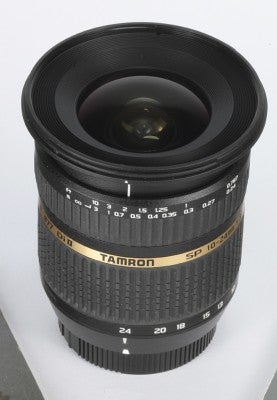After Tamron’s ambitious 10-24mm wideangle zoom produced inconsistent MTF results in a previous WDC test, we decided a re-test was in order to see whether our test lens was a one-off. This, then, is the definitive What Digital Camera Tamron SP AF10-24mm f/3.5-4.5 DI-II LD Aspherical (IF) lens review.
Tamron SP AF10-24mm f/3.5-4.5 DI-II LD Aspherical (IF) Review
Tamron’s use of the IF moniker is a little cheeky since this might lead users to expect the focusing ring to remain static in AF mode but that is not the case. Fortunately, the focusing ring is towards the front of the lens and is therefore easy for stray fingers to avoid. The zoom ring is much wider and more centrally located, making the lens very easy to use.
Although it went unnoticed in other situations, when the lens was used at the reception its roughly f/4 maximum aperture gave a distinctly dim viewfinder when compared with the other lenses that were employed at the function. Similarly, being a backup system Tamron’s zoom was used in conjunction with the pop-up flash from a Nikon D80, which meant tolerating a foreground shadow unless the shortest focal lengths could be avoided.
This raises an important issue in wideangle lenses: it is better to enlarge the front flange to permit the use of front-mounted filters without causing vignetting or should the front diameter be as small as possible to reduce flash shadows? Tamron has obviously gone for the former option.
Turning to the repeated MTF tests, there are both similarities and differences when the graph is put alongside the previous version. The most obvious similarity is the rapid decline in sharpness at 24mm, although it starts from a higher peak in the latest test. The most obvious difference is the close match between the 10mm and 18mm curves in the latest test: previously the 18mm intermediate focal length was distinctly weak below f/11.
The fact that the MTF curves are now improved has lifted the lens’s Feature score (beause all focal lengths are now usable in the critical f/5.6 to f/11 range) and similarly its Image Quality score but Overall Performance remains unchanged precisely because a retest was needed – and that suggests there may be variations between different lenses that are sitting on dealers’ shelves.





